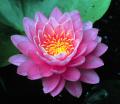
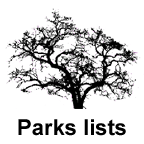
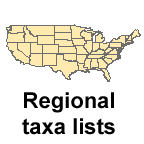
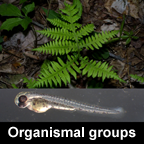
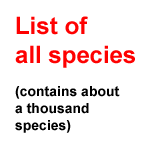
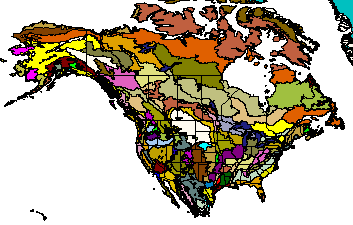
North American ecoregions (desktop version)
Click here for iPad version
http://bioimages.vanderbilt.edu/
What is Bioimages?
Bioimages is:
- a collection of high quality images of living organisms.
- a set of tools for learning about plants and ecoregions.
- a biodiversity database
- a demonstration of biodiversity informatics best-practices.
How do I use Bioimages?
You can explore Bioimages by clicking on images, buttons, or links starting with those on the left side of this page. Usually, if you click on a thumbnail or image it will take you to a higher quality image and additional information about that image or something related to it.
As of 2018-03-22, over 12,000 images are now Open Data with a Creative Commons Attribution (CC BY) or Public Domain (CC0) license! That is approximately 2/3 of the images in the collection.
All images on the Bioimages site are available under a license no more restrictive than Creative Commons Attribution-Noncommercial-Share Alike (CC BY-NC-SA). That means that they can be used for non-commercial purposes without asking permission and with proper attribution.
All image and organism metadata are available without restriction (i.e. under CC0 - No rights reserved). The data are available at the Bioimages GitHub repository.
Search Bioimages:
Test SPARQL search
Curb Center Creative Campus Innovation Grant
Click here to learn about our grant to facilitate image collection and processing.
Features
The following features add to the quality of the images on the site:
Persistent, globally unique identifiers (GUIDs) Each image and individual organism has been assigned an unchanging identifier in the form of an HTTP URI. This identifier can be used by a human or a computer to retrieve information about the resource in accordance with Linked Data principles.
RDF metadata using biodiversity informatics standards Metadata associated with each image and individual organism provides information such as location, time, taxonomic identity, intellectual property rights, etc. This information is visible to humans on the web pages, but is also accessible in machine-readable form as Resource Description Framework (RDF) metadata. These metadata are described using terms from Biodiversity Information Standards (TDWG), Dublin Core Metadata Initiative (DCMI) vocabularies, and the Darwin-SW Ontology (DSW). The Bioimages database contains about 1.5 million RDF triples that can be downloaded or searched via a SPARQL endpoint.
Standardized views Whenever possible, organism images are taken in standardized sets that document distinctive features of the organism. This standardization allows for easy comparison of the features of various taxa. The images in these sets are associated with the organism they document by linking the image identifiers to a unique identifier for the organism. The goal is to provide enough information in the image set to allow for an unambiguous taxonomic identification of the individual organism.
Contributors
Many people have contributed to the creation of Bioimages. They are listed on this acknowledgement page. Contributors to the ecoregions part of the site are listed separately.
Site information:
A site history page is here.
A list of informational web pages is here.
The original Bioimages site(http://www.cas.vanderbilt.edu/bioimages/frame.htm) reached ten million page views by its tenth anniversary in 2013. We stopped counting after that...
For additional information, contact Steve Baskauf


